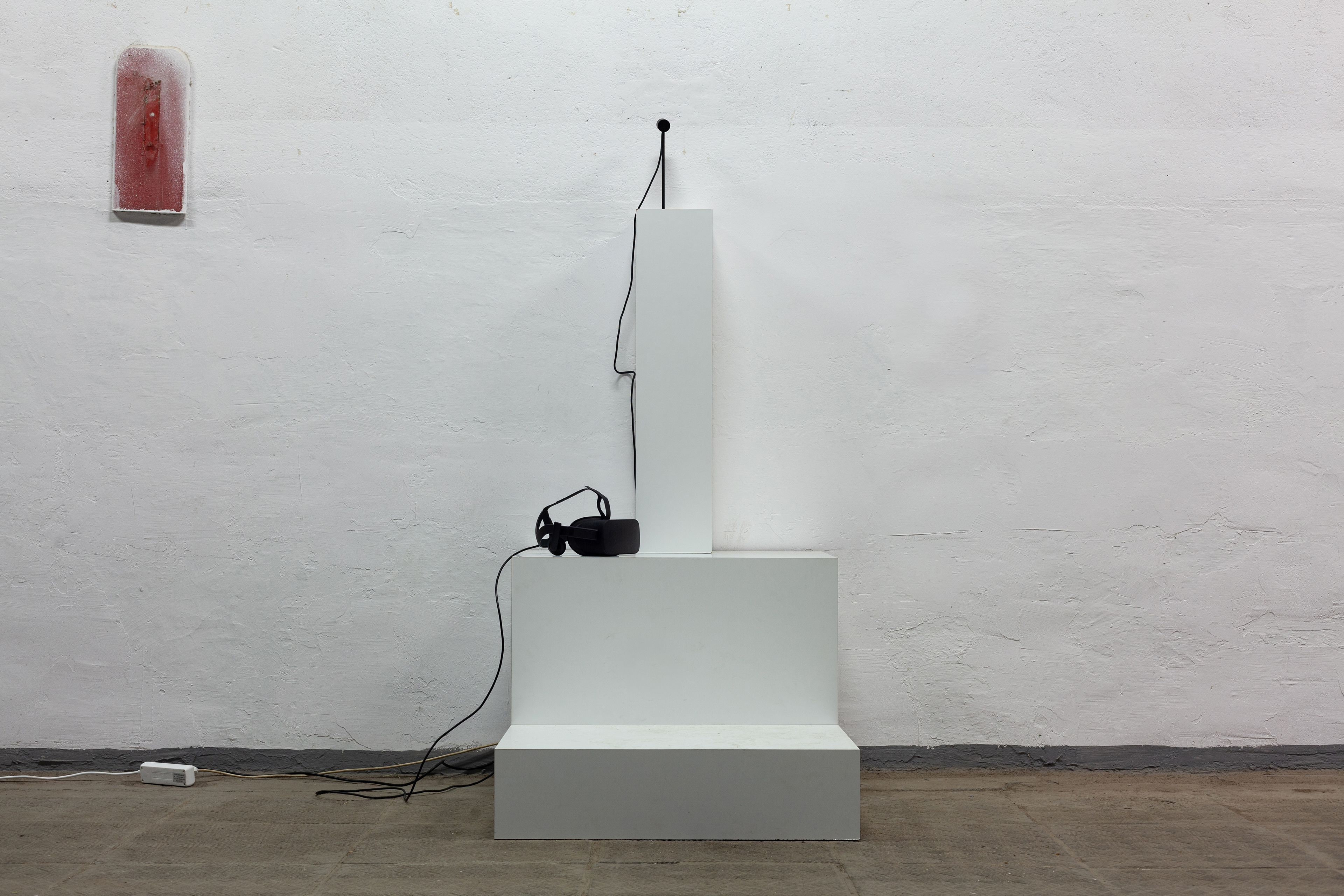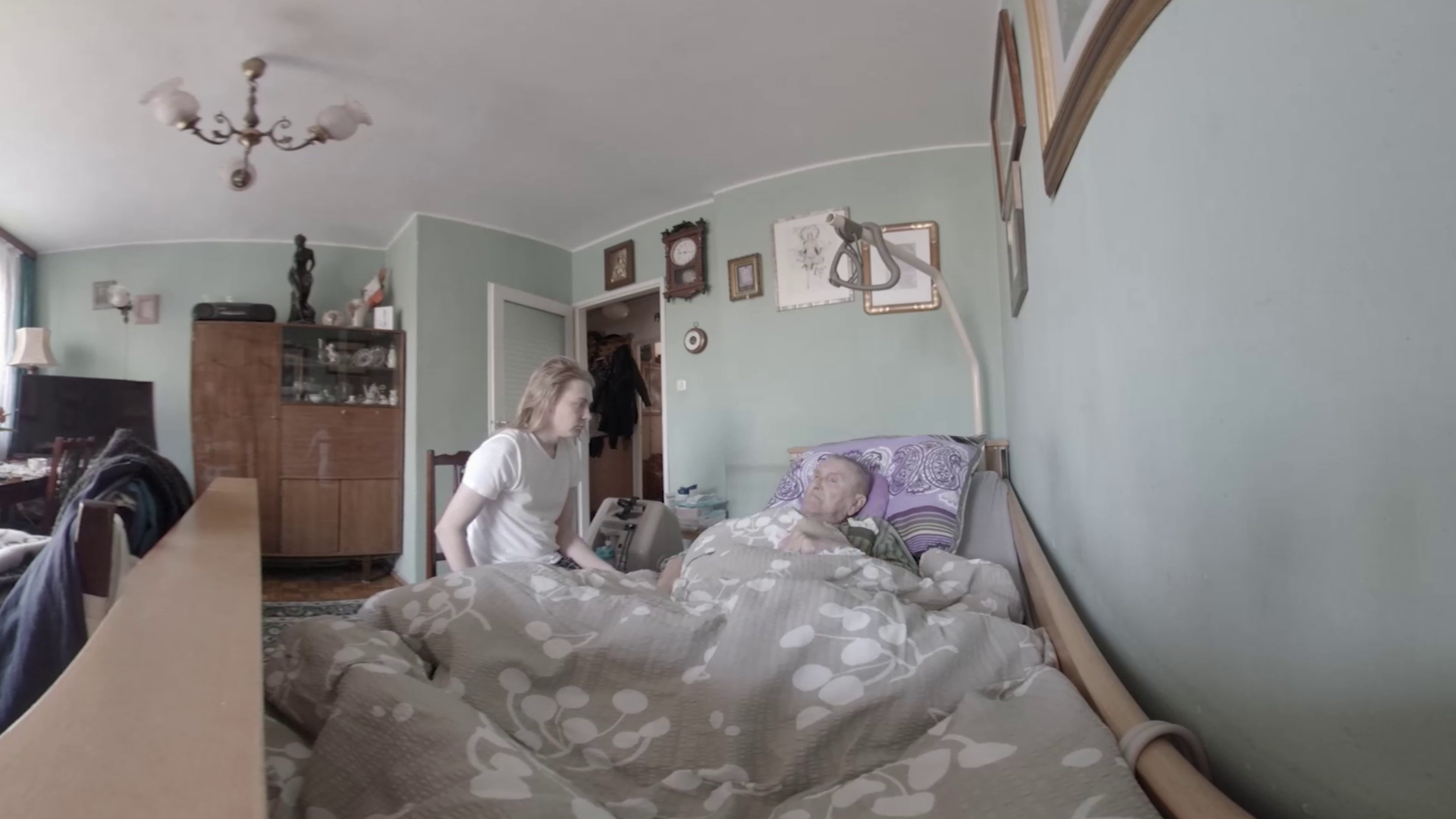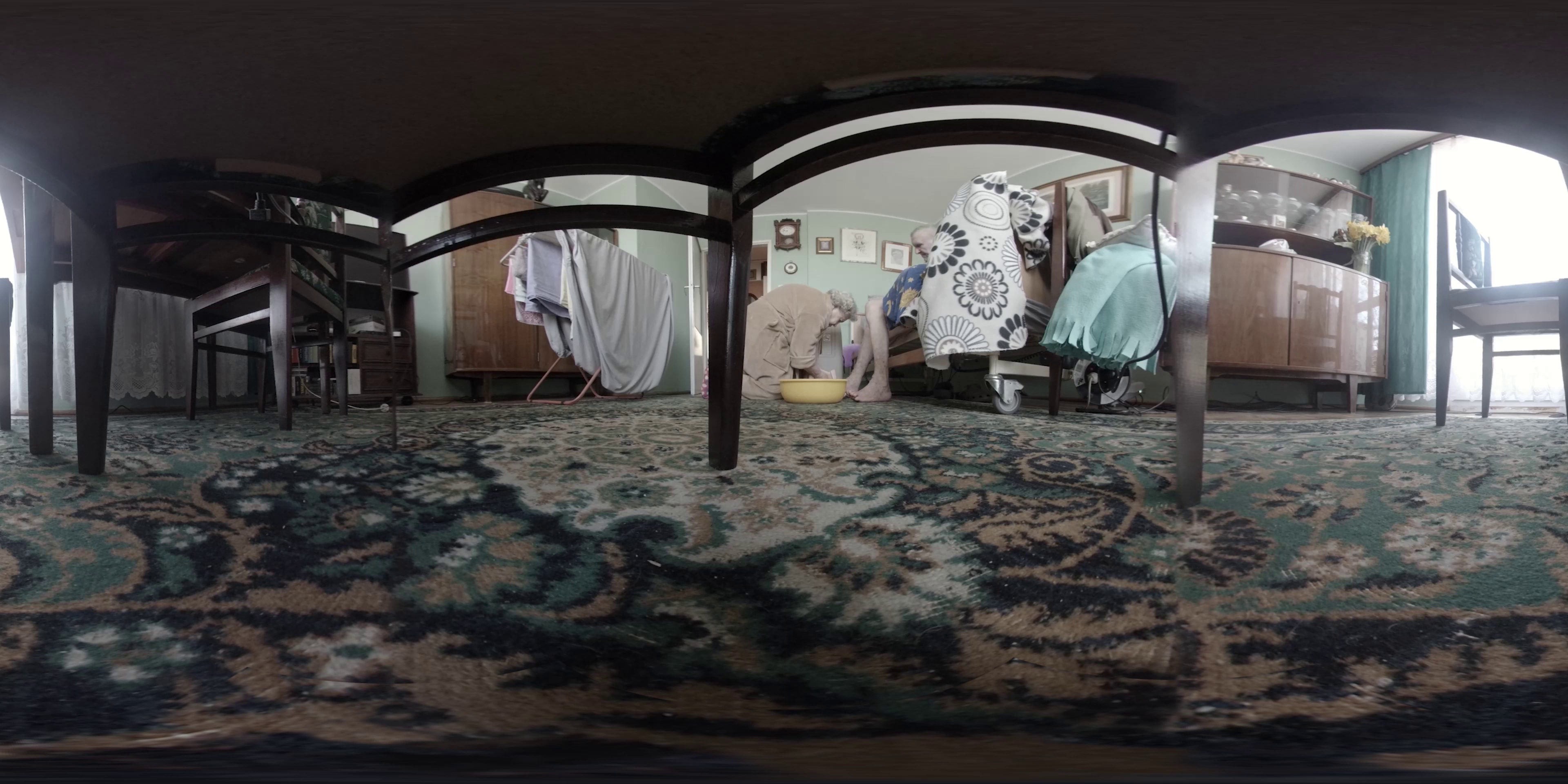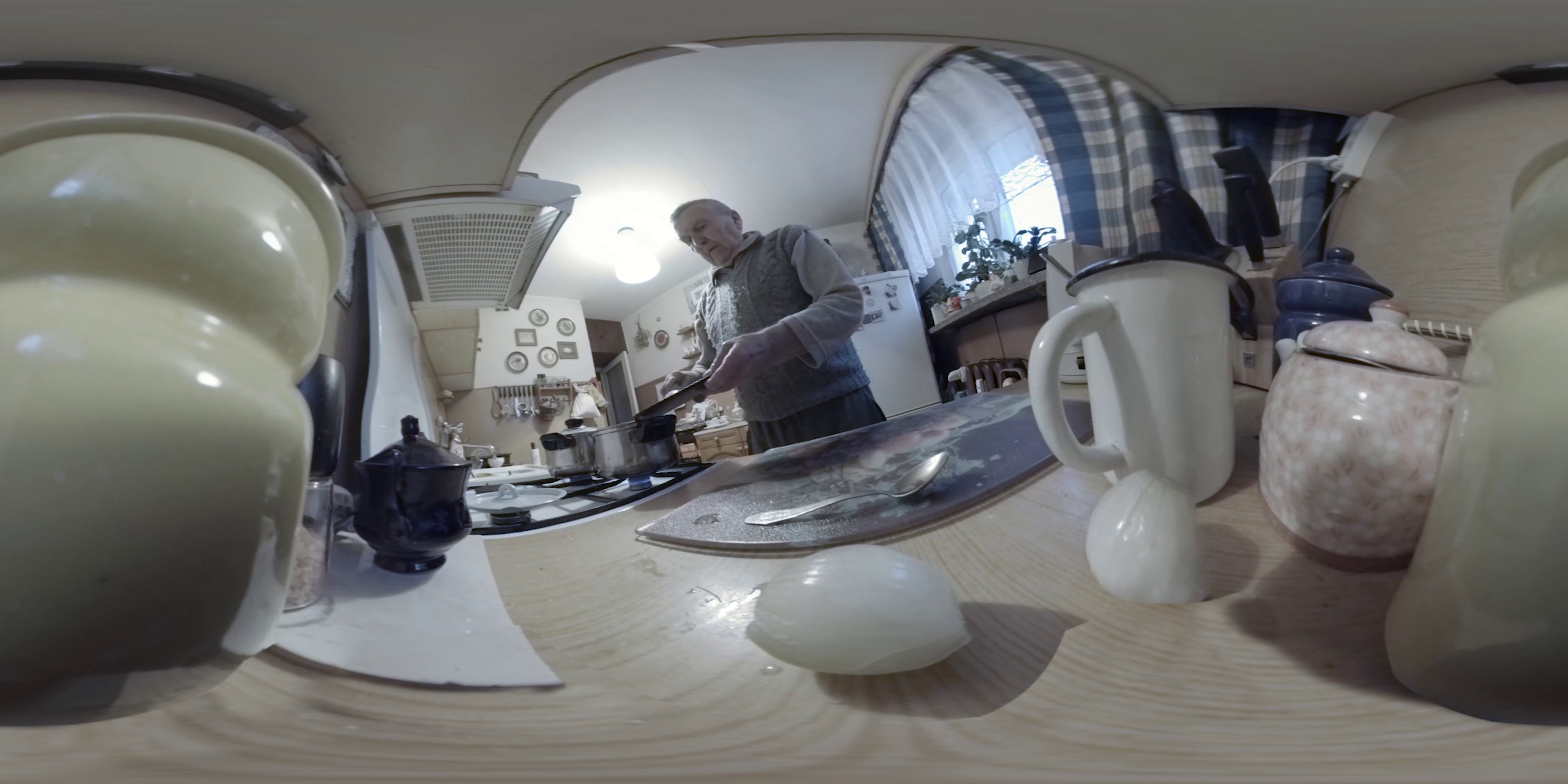



And I Love You so Much, and I Like You so Much is a 360-degree camera film which records the last months of life of Michał Marcinkowski, the artist’s grandfather. Love, watchfulness, and duration lie at the core of the piece. The VR technology comes with its limitations (the film can only be watched individually) and with its upsides – the viewer is drawn inside the image, often in bizarre relations
to space. The 360-degree technology and VR goggles made it possible to film scenes from the perspectives of sauerkraut, medications, or specks of dirt on the carpet. Besides being cognitively intriguing to the viewer, this also thoughtfully embodies one of the insights formulated by the protagonist: we a billionth part of a speck of dust. Immersed in the image, the viewer follows the action from the viewpoints of multiple different actors of reality. We are a speck of dust, sauerkraut,
a medication, and a spirit hovering over the gravely ill man. Additionally, as the center of the narrative is often located beyond the horizon of the gaze, viewers are positioned as characters bending over and looking down, as if in sadness. The plotline itself is not arranged chronologically. The film starts with the footage made a few hours before the protagonist’s death, while the last frames show him working in the kitchen, some months earlier. By no means random, this kind
of editing illustrates hope that we always hold out till the end. By means of the film, the situation is reversed. Instead of dying, the protagonist is healed.
to space. The 360-degree technology and VR goggles made it possible to film scenes from the perspectives of sauerkraut, medications, or specks of dirt on the carpet. Besides being cognitively intriguing to the viewer, this also thoughtfully embodies one of the insights formulated by the protagonist: we a billionth part of a speck of dust. Immersed in the image, the viewer follows the action from the viewpoints of multiple different actors of reality. We are a speck of dust, sauerkraut,
a medication, and a spirit hovering over the gravely ill man. Additionally, as the center of the narrative is often located beyond the horizon of the gaze, viewers are positioned as characters bending over and looking down, as if in sadness. The plotline itself is not arranged chronologically. The film starts with the footage made a few hours before the protagonist’s death, while the last frames show him working in the kitchen, some months earlier. By no means random, this kind
of editing illustrates hope that we always hold out till the end. By means of the film, the situation is reversed. Instead of dying, the protagonist is healed.